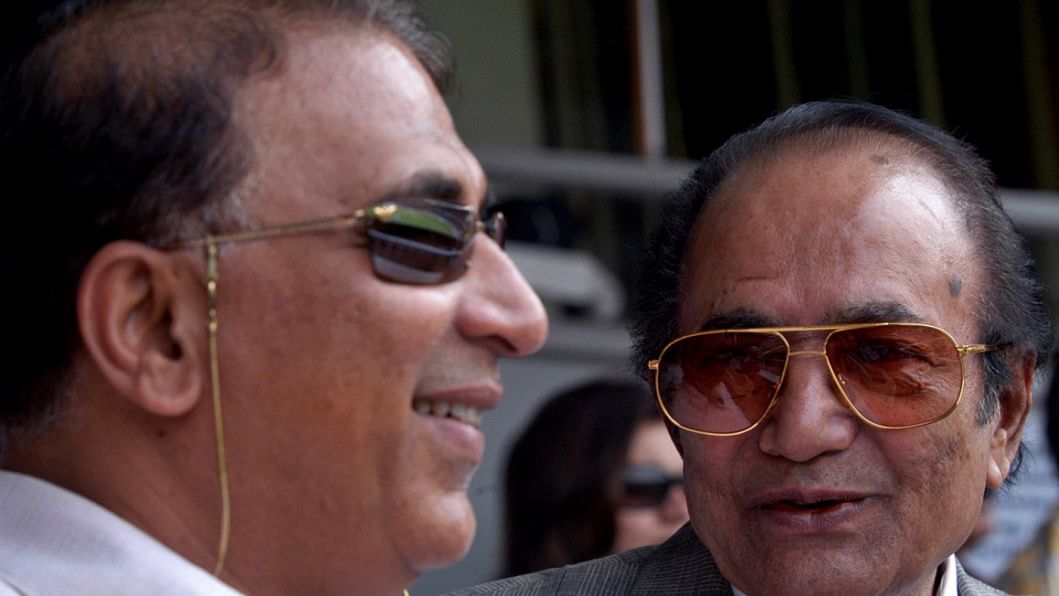Hanif, and some old-time jolly in Dhaka

Mohammad Kamruzzaman, a veteran Bangladesh sports journalist, was 15 years old when he went to the Dhaka Stadium to watch the Pakistan-New Zealand Test in November 1955. It was there that Hanif Mohammad, the original 'Little Master', left an imprint in his mind.
"Nobody else could even make a fifty in that game, except Hanif Mohammad," Kamruzzaman remembers. "He made a century, and handled the New Zealand attack really well. You could have called it a mediocre attack but on a matting wicket, they were tough to handle. John Reid bowled medium-fast in that game. They had a legspinner called (Alex) Moir. But New Zealand fell in big trouble towards the end of that game, losing six wickets for not many."
Hanif, all of 20 then, brought up his second Test century, hitting 103 out of Pakistan's 195 for 6 declared. The next highest score was Wallis Mathias, who made 41 not out.
Kamruzzaman, studying for his matriculation exam the following year, remembers managing some money from home to watch the match like many others. "I think my mother gave me money to buy the student concession tickets," he recollects. "I think it was five taka for the four days. I was glad to witness the first Test century in Dhaka. Hanif used to be a subdued batsman, and he tackled the New Zealand attack almost single-handedly."
Kamruzzaman, who has played the game at the club level and covered it for more than five decades, is now in his 70s. Hanif, he says, was adored by sport-loving Bengalis as much as he was in West Pakistan. Most vivid in his memory are Hanif's second and third Test tons at this venue, against England in 1962.
"Seven years later came those two centuries. I remember England were led by Ted Dexter and had a superb batting line-up. Hanif's first-innings century had some incredible shots, but the real hard work was in the second innings. He still managed to make 104 runs. See, he always batted for his team and hardly ever for himself."
Jalal Ahmed Chowdhury, one of the most experienced coaches in Bangladesh, is younger than Kamruzzaman but played cricket for a long time. He remembers what Hanif meant for his generation that grew up in the late 1950s and early 1960s.
"In the early 1960s, I was still in school. I remember of hearing about this man who doesn't get out," Jalal recalls. "A myth started to develop around Hanif Mohammad. He was one of the two stars we knew about in those days. The other one was Fazal Mahmood.
"Hanif became the idol for many of us. It had a lot to do about his endurance. By 1964-65, I started to get conscious about the game and one of the things I realised was that if Hanif did well, Pakistan would be saved. Like kids these days have Shakib and Mashrafe as heroes, in those days too they liked batsmen. Hanif became a favourite.
"He used to be known as a defensive player, but newspapers of the time regularly used a photo of him playing a slog sweep. It didn't really go with his batting style but I loved that photo. He understood bowlers very well. His evading technique always caught our eye and that was a big reason why he could tackle those big bowlers in the West Indies. He was a master of concentration."
Jalal said Hanif was a hero for kids growing up then as the youth population wasn't fully aware of the political rhetoric involving Pakistan. "Cricket was fun for us back then," he remembers. "The only anger within all of us back then was about Bengalis not getting a chance to represent Pakistan in sports."
Jalal also remembers the stories they heard in Dhaka about Hanif's breakthrough innings in Bridgetown. "We heard stories about Abdul Hafeez Kardar slipping notes into his hotel room during his marathon 337 in West Indies. Apparently during that series, Hanif used to regularly have his meals at a Muslim home."
Much like Kamruzzaman and Jalal, a certain generation remembers Hanif fondly. He was a charm before the world around them changed. But even in the Bangladesh of 2016, the news of Hanif's death brings sadness to an older generation who only have these memories to live by.








Comments